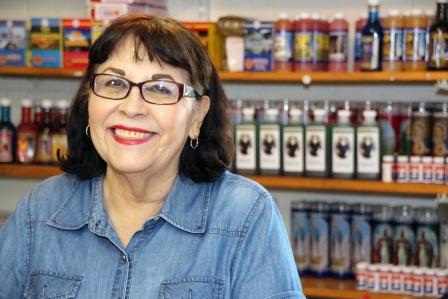People flock to folk saint who died 106 years ago


FALFURRIAS, Texas – Situated on a seemingly empty road just outside of Falfurrias, Texas, are two small buildings surrounded by a fence and a small yard with a handful of headstones. A historical land marker declares the property as the former residence of Don Pedro Jaramillo, a folk saint and curandero, or folk medicine healer.
KIII 3 News covers this story. https://bit.ly/17eOO3v
Throughout his life, Don Pedro made it a point to help whoever he could without seeking any recognition for it. For people’s sicknesses, he often created unique prescriptions, including mud packs, local plants and drinking large quantities of water, although tequila and red wine were also favorite ingredients. These prescriptions often differed from those of other folk healers who used more complex or hard-to-find ingredients.
Payment was never taken by the healer, but any types of donation were often given to organizations and charities. He simply worked as a healer because he believed it was a duty and special gift from God—a belief that Don Pedro had since before he moved to Texas.
Although the majority of his folk healing was done in South Texas, Don Pedro believed he received a sign from God to practice folk medicine and healing long before then. Legend has it that while living in his native Mexico, Don Pedro was riding on a horse, tending to a herd of sheep as he normally did. While riding, though, he was knocked off by a branch from a tree. When he fell, he landed on the ground, breaking his nose on impact. Although he would not have normally known what to do, Don Pedro did the first thing that came to mind: he went to a nearby water source, laid next to it and covered his nose in mud. He began to feel better within seconds. He continued this ritual for three days, healing himself.
After healing his broken nose, Don Pedro did not pay much attention to what had happened. But a few nights later, he had a dream that changed the course of his life. In the dream, he believed he heard the voice of God telling him that he needed to help others. From that moment on, Don Pedro made it his mission to help those in need.
Don Pedro was born in Mexico in 1829. Although there is not much known about his childhood, his life is well-documented since he was 52. At this age, his mother became ill. Don Pedro prayed and asked God to heal his mother. If she did not get better, he would leave Mexico. His mother passed away, leading Don Pedro to venture to Texas. He was familiar with the land because he had been there numerous times before. Don Pedro ended up settling in a small community, just outside of present-day Falfurrias.
Don Pedro’s folk medicine healings were often seen as miracles by those that he helped. In many cases, this could be true, but Don Pedro’s practices and remedies stemmed from a long tradition of folk medicine.
When Europeans colonized the New World, finding gold and silver was replaced by the interest in indigo dyes, tobacco, drugs and spices. In Europe, the apothecaries always included spices as part of their materia medica—the body of collected knowledge about the therapeutic properties of any substance used for healing. These colonists also learned of the native folklore of the Mayan and Aztec civilizations.
The Mayan Indians possessed extensive botanical knowledge and more than 400 uses for botanical drugs. More than 200 drugs used by North, Central and South American Indians ultimately became official in the U.S. Pharmacopoeia or the National Formulary.
“Unsurprisingly, folk medicine and practices of Mexico and South Texas were influenced to a great extent by Indian folklores,” said John Bowman, professor at the Texas A&M Health Science Center Irma Lerma Rangel College of Pharmacy.

“Unlike French Canada, the New England region and Louisiana, as well as New Sweden, New Amsterdam, Mexico and South Texas remained largely untouched by these European influences,” said Bowman, who is also a member of the American Institute for the History of Pharmacy. “Yet, the initial work of the Catholic missionaries included a healing ministry along with their spiritual work; their work combined with the existing folklore to create a unique set of practices of folk medicine, perhaps handed down from one person to another.”
Although faith in Don Pedro, his healing powers, and folk medicine seems to remain strong, recent discoveries in the medical and pharmacy fields have led to a decline in the belief that folk medicine and healing truly works.
“In the past few years, there was a survey that was taken asking college-aged students about their beliefs in folk healing,” said Christine Robbins, Ph.D., a professor for a folk medicine course at Texas A&M University-Kingsville. “The results concluded that the belief is steadily fading. The only thing keeping it around is the tradition that some families pass on generation-to-generation.”
Dolores Villarreal, the great-granddaughter of Don Pedro and lifelong resident of Falfurrias, Texas, keeps up with the shrine and has not seen much of a difference in the amount of people that regularly visit the shrine.
“Don Pedro has had a great influence on the culture surrounding folk saints. We can get up to 200 people in one weekend who come to leave tokens and prayers for him to help them in various ways.
“Even though some people come to ask for help in their lives—even if it is just to win a team sport—many come to find a cure for their illness,” Villarreal said. “People from all over the world will come to this small town just to seek whatever their needs are.”
Story written by Art Niño, junior English major at Texas A&M University-Kingsville.
Media contact: media@tamu.edu


